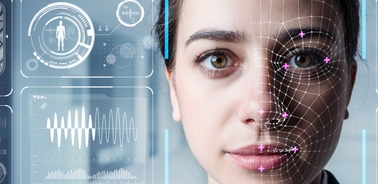- Home
- Blue Talks
- Rage Against The Machines: Gender Bias In Social Media
Rage against the machines: gender bias in social media

Are social media algorithms reinforcing gender discrimination?
In March 2022, campaigning British journalist Carole Cadwalladr tweeted to her 700,000 followers, “The structural misogyny & racism of the very fabric of modern life – the tech platforms we depend on – never ceases to depress me.” Embedded were screenshots of her ‘Topics to Follow,’ a list of suggested subjects of interest, chosen by Twitter, which were dominated by sports and male celebrities. “Not. A. Single. Woman,” Cadwalladr continued, highlighting the role algorithms play in shaping how users experience social media.
From prioritizing which posts to surface, to matching job opportunities to candidates, the content individual users see on social media is decided by these pieces of code. The tech giants offer little real insight as to their design or function, making it easy to overlook problematic behavior or bias – at least at first. But that is exactly what years of studies have uncovered. In one of the most egregious examples, from 2019, researchers tested Facebook’s ad delivery algorithm by placing separate job vacancies, for the lumber industry and for supermarket cashiers, specifying the same target audience for both. The lumber vacancy was shown to a 90% male audience, while 85% of the supermarket ads were delivered to women.
Engagement is the metric social media platforms prize above all others; clicks, likes and shares are at the heart of their business model. In turn, the algorithms that power them are designed to maximize that engagement by reflecting the world as it is – biases and all. “Whatever the majority of the population is looking for and expecting to find, that is what is going to come out,” explained Patricia Gabaldón of IE Business School.
But the problem goes deeper. “Algorithms use artificial intelligence, so they learn from our behavior,” Gabaldón said. If men disproportionately click on a given ad, the algorithms note that behavior and serve it to even more men, attempting to maximize engagement. This creates the risk of a feedback loop, whereby algorithms not only reflect existing societal biases, but actually reinforce, creating what is known as a filter bubble. “It’s not only the algorithm’s starting point [that matters], it’s how it gets modified along the way. Gender bias gets reinforced, and that grows exponentially.”
Most social media platforms have faced criticism for algorithmic-bias and discrimination. In 2021, Twitter removed its photo-cropping algorithm when it was found to discriminate on the basis of ethnicity and gender. Facebook has been sued for age and gender bias in how it serves ads. TikTok has been accused of racial bias in suggesting accounts to follow, while LinkedIn discovered unintentional gender bias in its job-matching algorithm.
In LinkedIn’s case, its algorithm had been designed to favor more robust content, and as men typically provide more information on their profiles, they were being elevated to the top of search results in greater numbers. Once identified, LinkedIn put measures in place to correct the problem, but the episode highlights how unintentional bias, too, can creep into an algorithm. Given the structural challenges women face at every level of the job market – studies show that even in Europe, women hold as little as 20% of board seats – the potential for social media to exacerbate gender bias in the workplace is a serious problem.
Fundamentally, however, social media companies are businesses like any other, with a corporate responsibility to maximize profits. Is it asking too much, therefore, to expect them to be a force for change? Speaking ahead of his participation at The Summit For Democracy, Manuel Muñiz, Provost of IE University, echoed Cadwalladr’s contention that social media plays too prominent a role in society to expect anything less: “Technology must respect fundamental democratic values such as privacy, equality or non-discrimination.”
In the end, it may be society that brings change to social media, given the way that algorithms learn from users’ behavior. “Younger generations are way more aware of their biases, there’s a new wave of gender equality coming,” predicts Gabaldón. “Everything is going to change very fast, and the algorithms will reflect all those changes.”